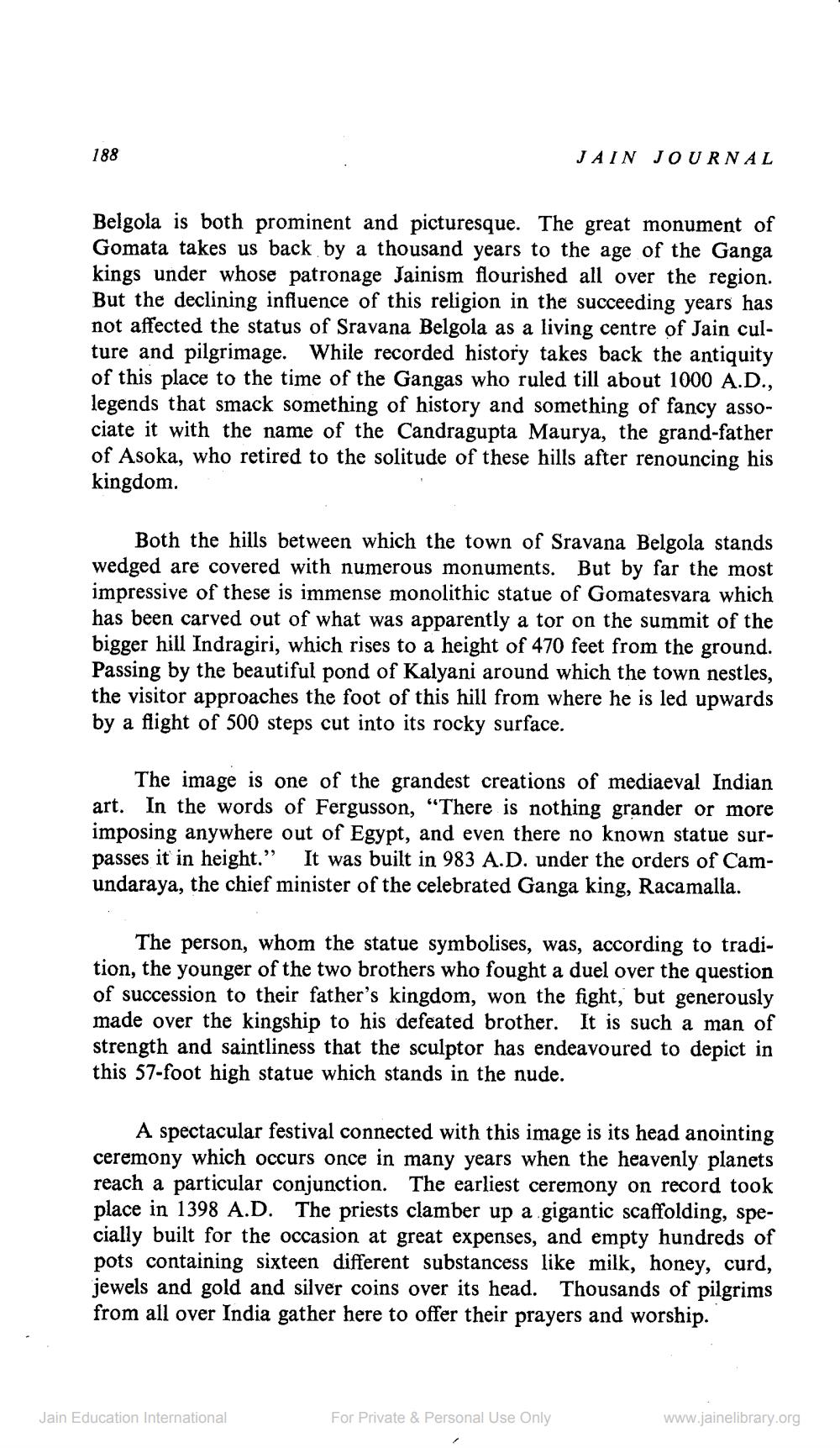________________
188
JAIN JOURNAL
Belgola is both prominent and picturesque. The great monument of Gomata takes us back by a thousand years to the age of the Ganga kings under whose patronage Jainism flourished all over the region. But the declining influence of this religion in the succeeding years has not affected the status of Sravana Belgola as a living centre of Jain culture and pilgrimage. While recorded history takes back the antiquity of this place to the time of the Gangas who ruled till about 1000 A.D., legends that smack something of history and something of fancy associate it with the name of the Candragupta Maurya, the grand-father of Asoka, who retired to the solitude of these hills after renouncing his kingdom.
Both the hills between which the town of Sravana Belgola stands wedged are covered with numerous monuments. But by far the most impressive of these is immense monolithic statue of Gomatesvara which has been carved out of what was apparently a tor on the summit of the bigger hill Indragiri, which rises to a height of 470 feet from the ground. Passing by the beautiful pond of Kalyani around which the town nestles, the visitor approaches the foot of this hill from where he is led upwards by a flight of 500 steps cut into its rocky surface.
The image is one of the grandest creations of mediaeval Indian art. In the words of Fergusson, "There is nothing grander or more imposing anywhere out of Egypt, and even there no known statue surpasses it in height.” It was built in 983 A.D. under the orders of Camundaraya, the chief minister of the celebrated Ganga king, Racamalla.
The person, whom the statue symbolises, was, according to tradition, the younger of the two brothers who fought a duel over the question of succession to their father's kingdom, won the fight, but generously made over the kingship to his defeated brother. It is such a man of strength and saintliness that the sculptor has endeavoured to depict in this 57-foot high statue which stands in the nude.
A spectacular festival connected with this image is its head anointing ceremony which occurs once in many years when the heavenly planets reach a particular conjunction. The earliest ceremony on record took place in 1398 A.D. The priests clamber up a gigantic scaffolding, specially built for the occasion at great expenses, and empty hundreds of pots containing sixteen different substancess like milk, honey, curd, jewels and gold and silver coins over its head. Thousands of pilgrims from all over India gather here to offer their prayers and worship.
Jain Education International
For Private & Personal Use Only
www.jainelibrary.org




